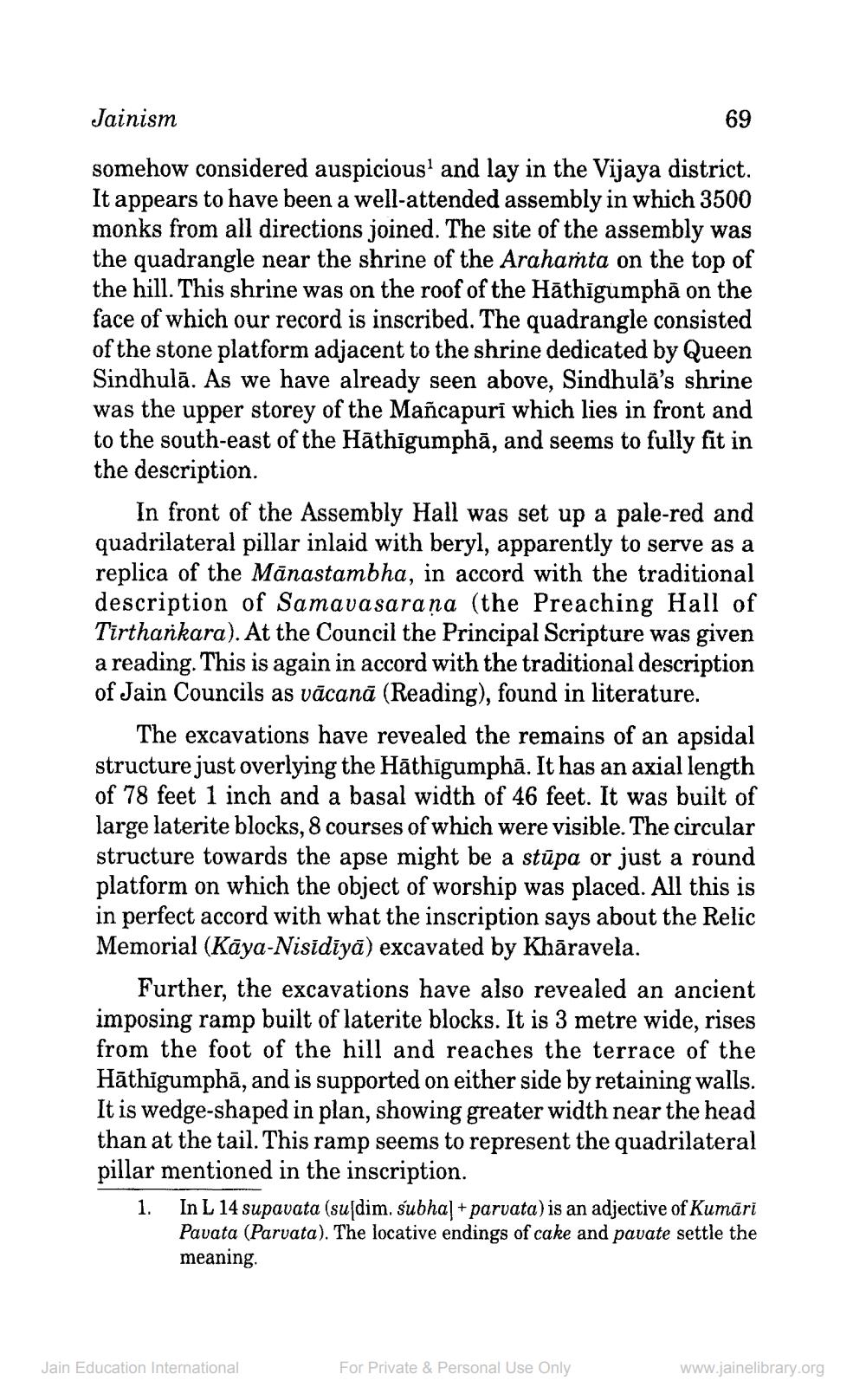________________
Jainism
69
somehow considered auspicious and lay in the Vijaya district. It appears to have been a well-attended assembly in which 3500 monks from all directions joined. The site of the assembly was the quadrangle near the shrine of the Arahaṁta on the top of the hill. This shrine was on the roof of the Hāthīgumphā on the face of which our record is inscribed. The quadrangle consisted of the stone platform adjacent to the shrine dedicated by Queen Sindhulā. As we have already seen above, Sindhulä's shrine was the upper storey of the Mañcapuri which lies in front and to the south-east of the Hāthīgumphā, and seems to fully fit in the description.
In front of the Assembly Hall was set up a pale-red and quadrilateral pillar inlaid with beryl, apparently to serve as a replica of the Mānastambha, in accord with the traditional description of Samavasarana (the Preaching Hall of Tirtharkara). At the Council the Principal Scripture was given a reading. This is again in accord with the traditional description of Jain Councils as vācanā (Reading), found in literature.
The excavations have revealed the remains of an apsidal structure just overlying the Hāthīgumphā. It has an axial length of 78 feet 1 inch and a basal width of 46 feet. It was built of large laterite blocks, 8 courses of which were visible. The circular structure towards the apse might be a stūpa or just a round platform on which the object of worship was placed. All this is in perfect accord with what the inscription says about the Relic Memorial (Kāya-Nisidiyā) excavated by Khāravela.
Further, the excavations have also revealed an ancient imposing ramp built of laterite blocks. It is 3 metre wide, rises from the foot of the hill and reaches the terrace of the Hāthīgumphā, and is supported on either side by retaining walls. It is wedge-shaped in plan, showing greater width near the head than at the tail. This ramp seems to represent the quadrilateral pillar mentioned in the inscription. 1. In L 14 supavata (susdim. subhal + parvata) is an adjective of Kumāri
Pavata (Parvata). The locative endings of cake and pavate settle the meaning
Jain Education International
For Private & Personal Use Only
www.jainelibrary.org




